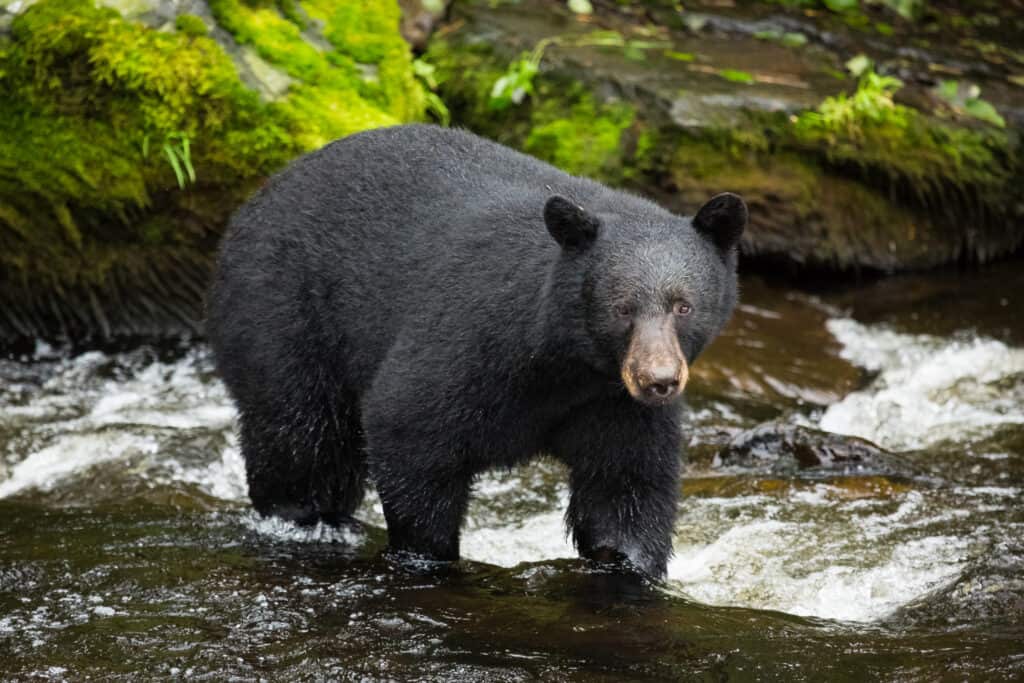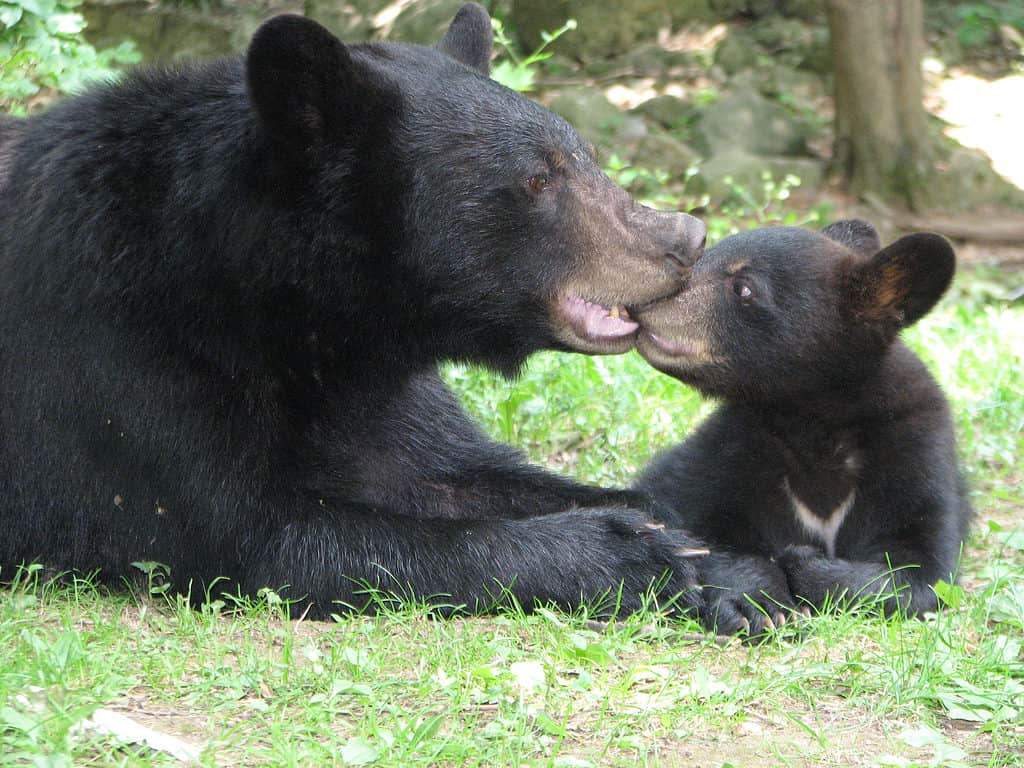Colorado is home to stunning natural wonders, not least of which is its healthy bear population. Over the years, hunters and wildlife officers have caught several impressive specimens. Read on to discover the largest bear ever caught in Colorado!
The Largest Bear Ever Caught in Colorado

In Colorado, the largest bear had a skull measurement of 22 9/16 inches
.©SCStock/Shutterstock.com
The largest bears ever caught in Colorado on record were two black bears with identical skull measurements of 22 9/16 inches. The more recent kill took place in 2018 in Garfield County. This kill tied the previous record from 2007, a black bear from Mesa County. Although not listed officially, another black bear kill could possibly contend with these records. On November 20, 2010, hunter Richard Kendall shot a massive black bear in its cave. The bear weighed 703 pounds and had a skull measuring 22 5/8 inches. However, the skull had not dried then, so its size may have subsequently decreased.
On October 13, 2022, Colorado Parks and Wildlife officers went to a Durango resident’s home to remove a huge black bear from underneath a deck. They estimated the bear was about 10 years old and weighed around 400 pounds. Rather than kill it, the responding officers successfully tranquilized, caught, and relocated it.
There are currently no known grizzly bear populations in Colorado and have not been for several decades. However, on September 23, 1979, hunter Ed Wiseman encountered an aging female grizzly bear in the San Juan Wilderness, usually considered the last of its kind in the state. The grizzly charged him, mauling him severely before he was able to jab an arrow into its jugular and heart. The bear retreated, laid down, and died. It weighed 350 to 400 pounds. The story was so incredible that officials initially investigated Wiseman for killing a member of a protected species. After a lengthy probe, he was cleared of all wrongdoing. Since the attack, there have been no other verified reported sightings of grizzlies in Colorado.
Black Bear: Types and Appearance
American black bears (Ursus americanus) are the only species of bears in Colorado. At one time, grizzly bears (Ursus arctos horribilis) also roamed the state; however, they were extirpated in 1979. Of the three species of bears in North America (including polar bears, Ursus maritimus, and brown bears, Ursus arctos, of which grizzlies are a subspecies), black bears are the smallest. In Colorado, adult males average 275 pounds while females average 175 pounds. However, as seen by the size of the historic kills on record, bears of this species can grow significantly larger. The biggest black bear ever recorded in North America weighed 1,100 pounds at the time of its death. A hunter from New Brunswick, Canada, shot and killed it in 1972.
Colorado black bears often have black pelts, though brown, cinnamon and blonde individuals are not uncommon. White and bluish-grey variations occur occasionally in other regions of North America.
Black Bear: Habitat
Black bears in Colorado live mostly in the western and central regions of the state including the middle and lower altitudes of the Rocky Mountains. They prefer forested areas with plenty of cover and natural food sources. Over 90% of a black bear’s food consists of berries, fruits, grasses, plants, and nuts. Their most active period is from mid-March to early November, after which they choose a den for the winter.
How Many Black Bears Are There in Colorado?

It is estimated that there are between 17,000 to 20,000 black bears in Colorado.
©Susan Kehoe/Shutterstock.com
The most recent data from Colorado Parks and Wildlife (CPW) suggests there are between 17,000 and 20,000 black bears in Colorado, though this may be a conservative estimate. This is a significant increase from the 2002 estimate, which suggested the state homed at least 12,000 black bears, as well as the 1991 estimate of 10,000 to 12,000 bears.
In 2016, the IUCN assessed black bears as a species of Least Concern. Currently, there are about 900,000 black bears in North America, though their populations are increasing.
Is It Legal to Hunt Bears in Colorado?
It is legal to hunt black bears in Colorado with a license. See CPW’s Hunt Big Game webpage for more information on hunting guidelines, restrictions, and purchasing a license.
Are Black Bears Dangerous?
Black bears are large predators and therefore have the potential to be dangerous. Nonfatal encounters are common and on the rise due to increasing bear and human populations in Colorado. Despite this, black bears kill less than one person annually across North America and have only killed four people in Colorado since record-keeping began in 1960.
Food typically motivates black bears to encroach on human property. As winter approaches, black bears must consume up to 20,000 calories a day to pack on fat for the scarce months ahead. This leads them to seek out calorie-rich foods such as those found in garbages and around human dwellings. The best way to avoid conflict with black bears is to avoid leaving food or food scraps in accessible places, including bird feed and pet food.
Conclusion
For more information on how to live safely with black bears, see the Colorado Parks and Wildlife document, Living with Bears. Check out their webpage, Camping & Hiking in Bear Country, for tips on avoiding conflict with bears while in the great outdoors.
Up Next:
- Discover the 10 Largest Bears in the World
- Discover the Largest Bear Ever Caught in Washington
- Discover the Largest Bear Ever Caught in Wyoming
The photo featured at the top of this post is © iStock.com/Mark Lee
Thank you for reading! Have some feedback for us? Contact the AZ Animals editorial team.






